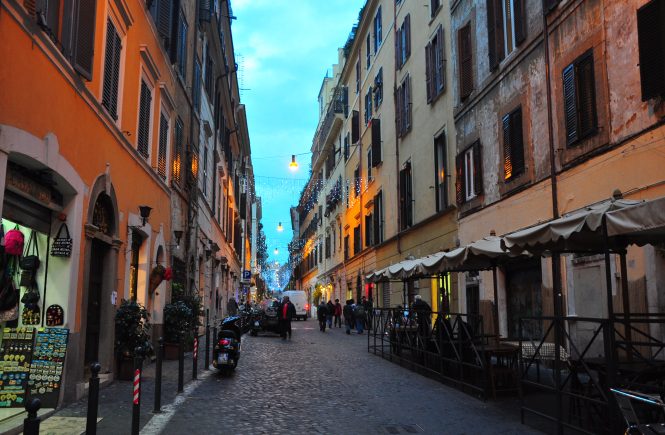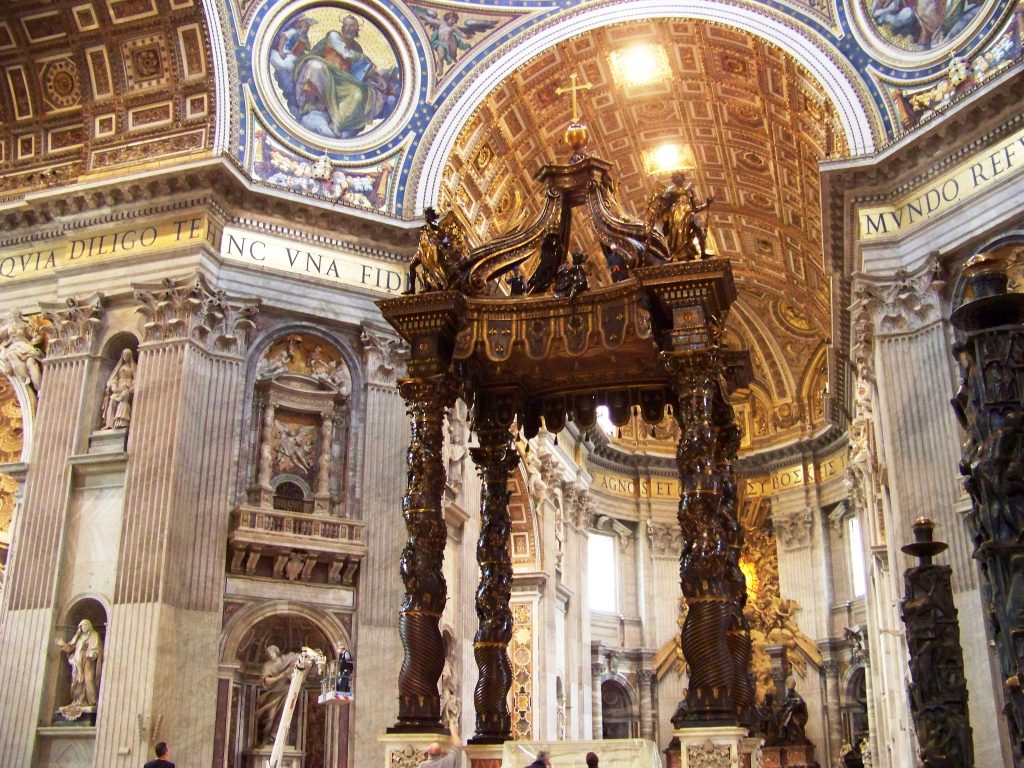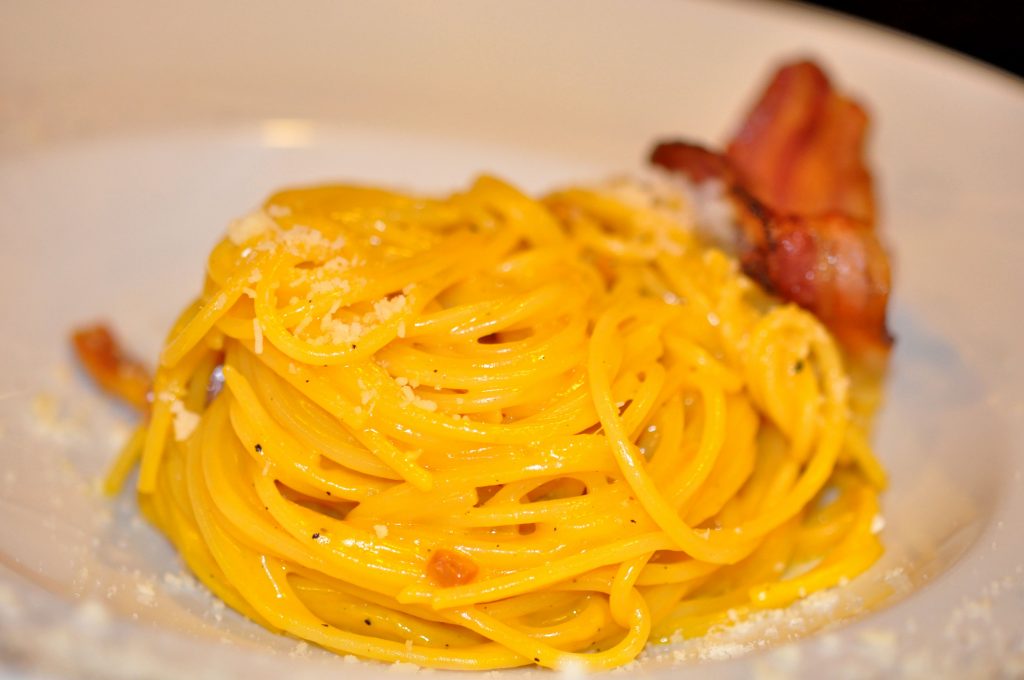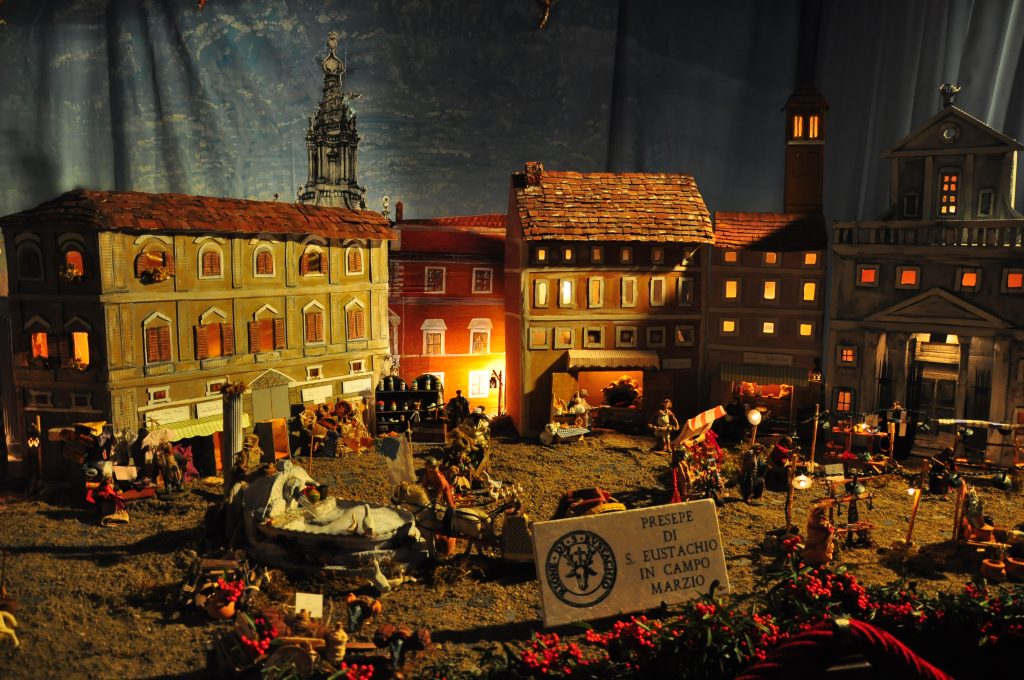In case you haven’t heard, it is really, very, ridiculously warm in Rome right now; this week, temperatures are hitting 95°F. And even if you’re coming in the “fall,” don’t kid yourself: The heat traditionally continues into September.
Visiting the Eternal City during the hottest months? Here, five top tips for beating the heat in Rome.
Head underground. It’s always much cooler in the subterranean world—sometimes so much cooler, you’ll wish you brought another layer. The best part? Since 60 percent of the ancient city of Rome remains buried underground, some of the best sites in the city are down there! Consider the catacombs, ancient underground cemeteries where thousands of Christians were buried; booking a (super-cheap) visit to the Columbarium of Pomponio Hylas; or the underground of the Basilica of San Clemente (bonus: the church itself is naturally cool, too), among many other sites.
 Start going to church. Rome’s churches aren’t just religious sites: They’re treasure troves of art, history, and architecture. Thanks to their thick stone walls and shaded spaces, they’re also naturally air-conditioned (yay!). Find cooler temperatures and get away from the crowd by heading to the ancient Basilica of Santa Sabina (complete with 5th-century door); the Gothic gem of Santa Maria Sopra Minerva, right near the Pantheon (above); or the Basilica of Santi Quattro Coronati, with its 13th-century frescoes. And that’s just for starters.
Start going to church. Rome’s churches aren’t just religious sites: They’re treasure troves of art, history, and architecture. Thanks to their thick stone walls and shaded spaces, they’re also naturally air-conditioned (yay!). Find cooler temperatures and get away from the crowd by heading to the ancient Basilica of Santa Sabina (complete with 5th-century door); the Gothic gem of Santa Maria Sopra Minerva, right near the Pantheon (above); or the Basilica of Santi Quattro Coronati, with its 13th-century frescoes. And that’s just for starters.
Sightsee at night. The hottest hours in Rome tend to be from about noon to 5pm — prime time for sightseeing. So instead of trudging around in the heat, check for any “extraordinary openings” of sites at night:
- On the last Tuesday of the month, some of Rome’s best-known sites and museums are both open from 7pm-11pm and free, including the Borghese museum, Pantheon, and Palazzo Barberini.
- On Friday nights from Sep. 2-Oct. 28, the Vatican museums are open from 7pm-11pm. (Most of the museum complex is not air-conditioned, and is very crowded during summer days, so believe me — seeing it at night is a cooler experience in more ways than one!).
- On Saturday nights until Sep. 17, the otherwise-blazing Colosseum, and its underground, will be open at night.
 Head to the hills. The famed “seven hils of Rome” are just a start. Rome has even more hills than that, and many boast leafy parks and lovely views of the city, making them the perfect escape spots for summer. Some of my favorites: the Janiculum hill, famed for its views; the Villa Borghese, Rome’s answer to Central Park; the Villa Celimontana, next to the Colosseum; and the nature reserve of Monte Mario (above).
Head to the hills. The famed “seven hils of Rome” are just a start. Rome has even more hills than that, and many boast leafy parks and lovely views of the city, making them the perfect escape spots for summer. Some of my favorites: the Janiculum hill, famed for its views; the Villa Borghese, Rome’s answer to Central Park; the Villa Celimontana, next to the Colosseum; and the nature reserve of Monte Mario (above).
Take a dip. The heat really getting to you? Take a break and go to the pool. Although outdoor pools are few and far between in Rome’s center, one of the most convenient is the swimming pool in the Celimontana, just a stone’s throw from the Colosseum. It’s not cheap, costing €16 on weekdays (€10 for kids under 10) and more on weekends.
My advice? Since Rome gets hottest in the early afternoon, do your sightseeing (maybe even of the forum, Palatine and Colosseum) in the morning, break for lunch, and then reward your family by heading to the pool at 2pm, when prices drop to €10 per adult and €6 per child. The pool stays open till 7:30pm, so you still have plenty of time to relax… and cool down. Here’s more info on the OS Pool at the Colosseum.
[Update, 7/3/2012: It’s now €20 on weekdays,€25 on weekends, without mention of a child’s discount. It’s also €15 for a half-day on weekdays and €20 for a half-day on weekends].
Want more tips about what to do in the Eternal City? Check out The Revealed Rome Handbook: Tips and Tricks for Exploring the Eternal City, available for purchase on Amazon, below, or through my site here!


















